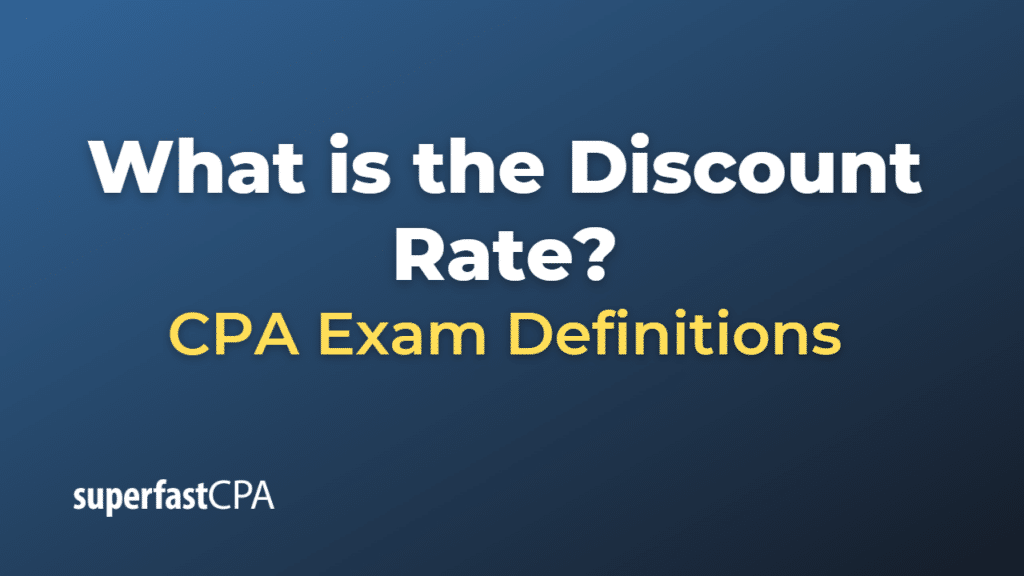Discount Rate
The discount rate has different meanings in different contexts, but generally, it is a rate used to determine the present value of future cash flows.
- In finance and investing, the discount rate is often used in discounted cash flow (DCF) analysis. It is the rate of return required by an investor from a particular investment. It represents the investor’s opportunity cost, i.e., the return that the investor could earn on an alternative investment of comparable risk. The discount rate is used to “discount” future cash flows back to their present value, allowing for more accurate comparisons and investment decisions.
- In central banking, the discount rate is the interest rate charged to commercial banks and other depository institutions on loans they receive from their regional Federal Reserve Bank’s discount window. This rate is set by the country’s central bank. It serves as a benchmark for other short-term interest rates and plays a role in controlling money supply in the economy.
- In insurance and pension plans, the discount rate (also known as the interest rate) is used to convert future benefit payments into their present value to determine the current liability.
In each of these contexts, the discount rate is crucial for determining the present value of future cash flows and managing the balance between present spending and future financial needs. The choice of the discount rate can significantly affect the present value calculation, and thus the financial decision-making process.
Example of the Discount Rate
Let’s look at an example of using a discount rate in a discounted cash flow (DCF) analysis, which is a common application in finance and investing.
Assume you are considering an investment that will cost you $1,000 today. You expect the investment to generate cash flows of $500 in one year and another $600 in two years. You have decided that a suitable discount rate for an investment of this risk level is 5% per annum.
You can calculate the present value (PV) of these future cash flows as follows:
- PV of year 1 cash flow = $500 / (1 + 0.05)^1 = $476.19
- PV of year 2 cash flow = $600 / (1 + 0.05)^2 = $541.17
Adding up these present values gives the total present value of the expected cash flows:
- Total PV = $476.19 + $541.17 = $1017.36
The total present value of the cash flows from the investment ($1017.36) is greater than the cost of the investment ($1,000), so the investment would be considered profitable, and it would make sense to proceed based on the DCF analysis.
This example demonstrates how a discount rate is used to compare the value of money today with the value of expected future cash flows. By adjusting future cash flows using the discount rate, you can compare investments on an “apples-to-apples” basis and make more informed investment decisions.













